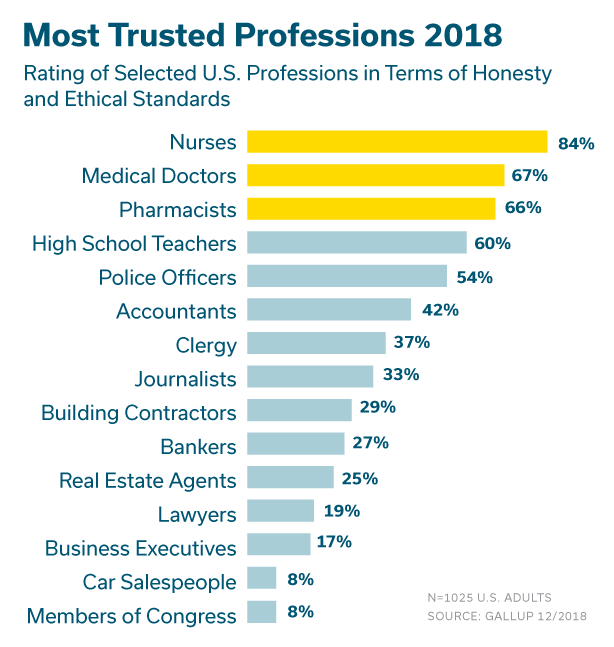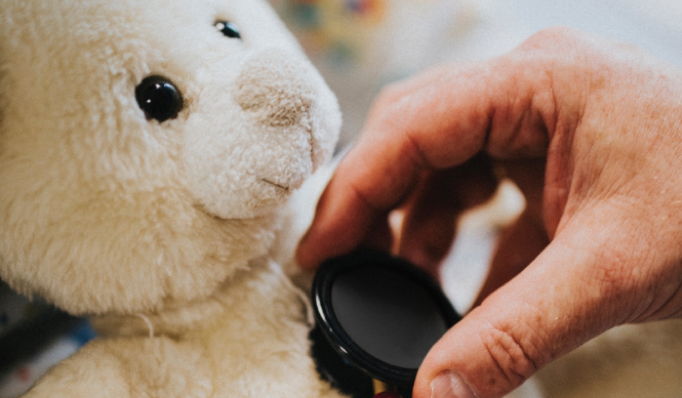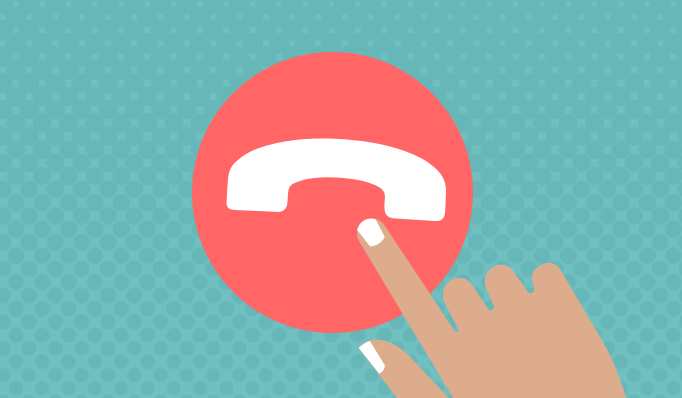Healthcare professionals have a special place in the hearts and minds of consumers. Unfortunately, doctors and nurses are increasingly overwhelmed with a heavy workload, which is compromising their ability to engage with their patients. There is an opportunity to leverage technology, but most healthcare IT is pretty cold and clunky. There is hope, but it will require different thinking.
Technology can do a lot of things, but has it gotten closer to addressing patient emotional needs that doctors and nurses provide?
In the 1960s the creators of Star Trek had a point of view.
“Compassion: that’s the one thing no machine ever had. Maybe it’s the one thing that keeps men ahead of them.” — Dr. Leonard McCoy, Star Trek, Season Two, Episode 24, The Ultimate Computer
Honest. Ethical. Overwhelmed.
A recent Gallup poll asked Americans to rate the “honesty” and “ethical standards” of a diverse list of professions. And, like in many instances since the rankings first came out 17 years ago, medical professions are high on the list. Nurses, Doctors and Pharmacists took the top three spots in 2018.

It’s hard to argue with a list like this. Members of Congress are at the bottom, just below the dreaded car salesperson which should shock nobody. It’s equally obvious that the professionals that help keep us alive and feeling good would score high. If Gallup added a third element to their criteria — compassion — it’s likely there would be little change to the rankings.
When the time comes to interact with the health care system, doctors and nurses are there for us, answering countless questions, patiently dealing with fears and anxiety, and sometimes delivering devastating news. Medicine is a career few of us could handle, even if we had the determination and smarts to make it through the educational gauntlet required to get there.
Doctors and nurses are rock stars, plain and simple. That’s the great part of this story. But there’s a problem.
Unfortunately, there are not enough doctors and nurses to go around. According to some estimates, there are only 26 physicians and 110 nurses for every 10,000 people. And, as the baby boomers age, that numerical disadvantage is going to get more stressed. There is simply not enough time in the day to meet every patient’s need for one on one interaction.
It’s Time to Refocus Innovation Efforts
Like in other industries, technology provides some level of hope. Advancements in medical tech have been very impressive, but on the patient experience side, the progress has been less than stellar so far.
Massive, expensive efforts to digitize the business side of healthcare have removed a lot of paper and centralized information online. The end-state vision of these big systems includes making the patient experience better, but adoption rates are still painfully low. Most medical professionals would also tell you that medical record keeping technology has made them less productive and costs them precious time interacting with their patients.
So how can technology “scale” some of the interactions between providers and patients and do it in a way that extends the valued traits of honesty, compassion and ethics that are so cherished? The reality is that most of today’s patient-facing tech is pretty cold — as in “click here to see your lab results” or a robo call appointment reminder.
One area of new innovation that does provide hope is conversational chatbots. There has been a lot of hype around advanced bots that interact through natural language processing (NLP) however that technology is still early.
Conversational Patient Engagement
Chatbots designed to interact with people through advanced, text-based messaging is capable of delivering a more human interactive experience.
As compared to a blue button on a web page, a bot might communicate like this:
Hi Greg, your labs are ready and available online here.
Dr. Smith would like to take some time to discuss the results with you. I can help you schedule that appointment now. What day works for you next week?
This entire sequence takes place on a mobile phone, the same way we text with friends.
No technology will ever replace the vital human interactions with doctors and nurses. But, if we accept the fact that there aren’t enough doctors and nurses to go around, conversational technology could provide a bridge and cover some of the more mundane, time consuming processes, while leaving the important stuff to the face-to-face interactions.
Today’s patients are readier for this kind of technology than ever before. The current new generation of Medicare members and heavy users of the health care system, baby boomers, grew up with technology. They were on the front lines as PCs, the Internet, Facebook, and Mobile took over our personal lives. They were the first to go online to book flights in 1997 and were the first to use Facebook to find long lost high school friends.
Unlike any time before, technology innovation has reached a point where the ability to converse in humanistic ways has arrived. Talking will come soon, but messaging is here now and it’s smarter than most people think. The jury is still out whether chatbots will achieve honest, ethical, compassionate status in the minds of patients. When the alternative is a blue button on a screen that links to a dense online catalogue of links and documents, there is hope.
It will be interesting to see how much longer this holds true. It is doubtful we’ll need to wait until the year 2265, when McCoy, Kirk and Spock were flying around the galaxy.








